The second half of my time at COP went by much faster than expected, largely due to unforeseen circumstances but also because of my general familiarity with the venue. One of the largest aspects of this conference was networking, exercising communication skills, and maintaining professional relations. While in the Green Zone—the section of COP30 dedicated to interacting with civil society and businesses on climate-change action and showcasing developing solutions—I attended a COP and Coffee event hosted by Deloitte.
The global business management corporation held a morning discussion led by Dr. Freedom-Kai Philips, leader of the Global Deloitte Center for Sustainable Progress; Dr. Pradeep Philip, lead partner of Deloitte Access Economics; Maria Emilia Peres, Brazil Sustainability Leader; and Victoria Paz, finance lead of the Mangrove Breakthrough Hub. This discussion focused on funding sustainability efforts and effectively allocating finances to satisfy both investors and communities; financing mangrove agroforests was used as a prime example.
The conversation placed significant emphasis on collaborating with the private sector and navigating ways to receive or utilize funding, such as requesting business loans. Dr. Philips emphasized that it is critical to consider the way finance is deployed, what capital is put into, and how to ensure that the asset has “high integrity” in the eyes of insurers. While attending these discussions is essential to furthering my understanding of sustainable development, I find it equally important to engage in the discourse as well, and I held myself to a high standard of involvement as both a scholar and a delegate of UConn.
After the discussion, I reached out to Dr. Philips for follow-up on the measurement of “high integrity” environmental assets. He explained in depth how these resources benefit communities on the grounds of their permanence, additionality, and transparency in reporting.
Not only did this interaction provide valuable insight, but he also resonated with me and the other UConn COP students, and he was kind enough to provide us with a guided tour of the COP30 Blue Zone. I established connections and gained insight on many diverse fields and topics I likely would never have encountered otherwise. Although my Thursday and Friday explorations were unfortunately cut short due to the fire, I still made use of pre-established connections to further my COP experience. Earlier in the week, I had attended the Thailand Pavilion youth-led “Regeneration Generation” panel. Most of the students were from Washington University, and my engagement in their panel allowed me to follow up with an informative and engaging lunch discussion on Thursday.
All of these immersive opportunities and connections fueled my professional and academic growth in ways I never would have anticipated. COP30 provided me with invaluable opportunities, meaningful connections, and a deeper understanding of the global climate landscape—insight that will continue to shape my path as a student and a professional.
Toriana Grooms is a junior majoring in political science and English with a minor in German.
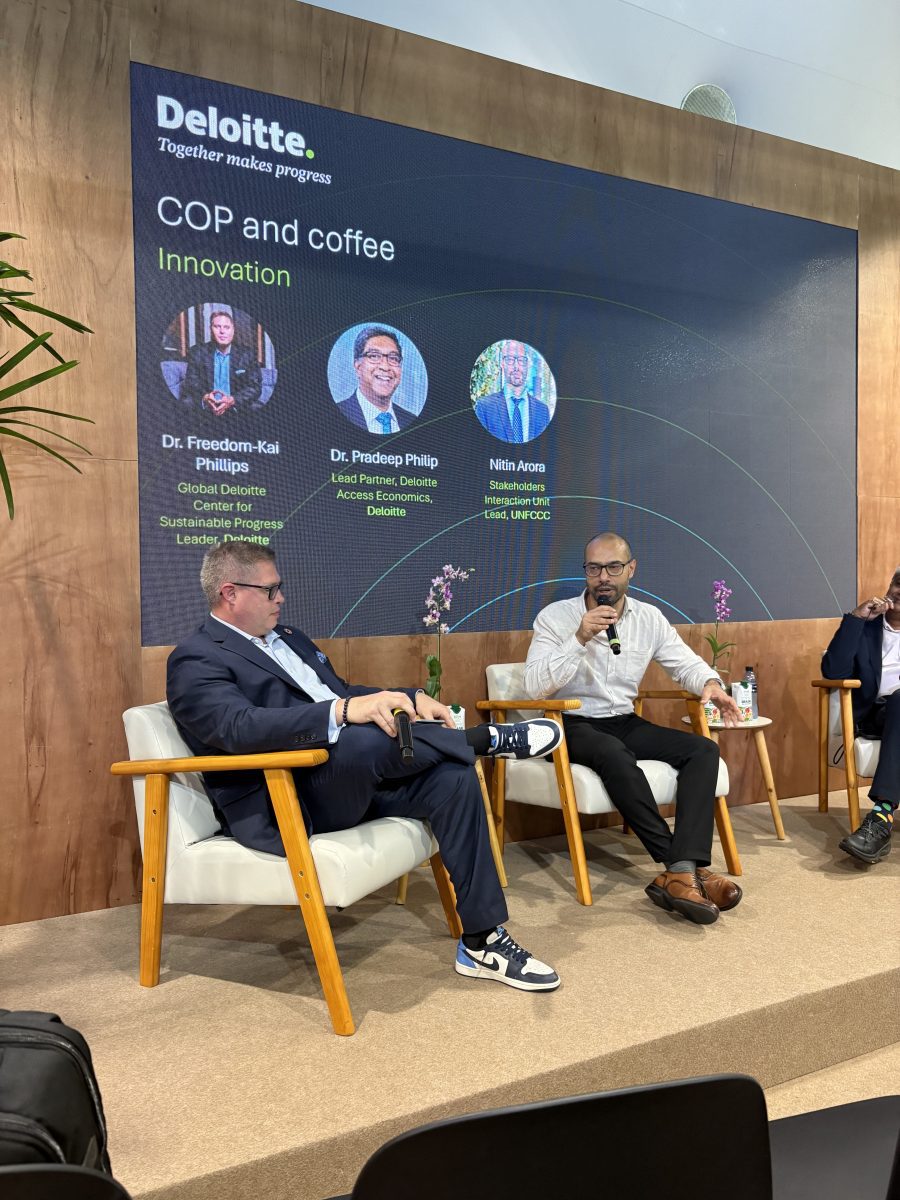 On Wednesday, we met with Dr. Phillips and were provided with an experience that I will forever appreciate. Dr. Phillips walked us around the Blue Zone Pavilions, introducing us to his colleagues and friends who work at different climate organizations. He gave us a proper lay of the land and made COP feel smaller and manageable. We met leaders working in the Ocean, Digital Innovation, and World Green Economy Pavilions. We got the exclusive opportunity to talk with a secretariat at the United Nations, in the restricted section of the Blue Zone. This experience framed my perspective for the last two days I spent at COP. It reaffirmed the idea that everything is about the connections you have with individuals in and outside of your field. As we parted, Dr. Phillips reminded us that, in 10 years when we are growing professionals in our respective fields, we need to share our experiences like he did.
On Wednesday, we met with Dr. Phillips and were provided with an experience that I will forever appreciate. Dr. Phillips walked us around the Blue Zone Pavilions, introducing us to his colleagues and friends who work at different climate organizations. He gave us a proper lay of the land and made COP feel smaller and manageable. We met leaders working in the Ocean, Digital Innovation, and World Green Economy Pavilions. We got the exclusive opportunity to talk with a secretariat at the United Nations, in the restricted section of the Blue Zone. This experience framed my perspective for the last two days I spent at COP. It reaffirmed the idea that everything is about the connections you have with individuals in and outside of your field. As we parted, Dr. Phillips reminded us that, in 10 years when we are growing professionals in our respective fields, we need to share our experiences like he did.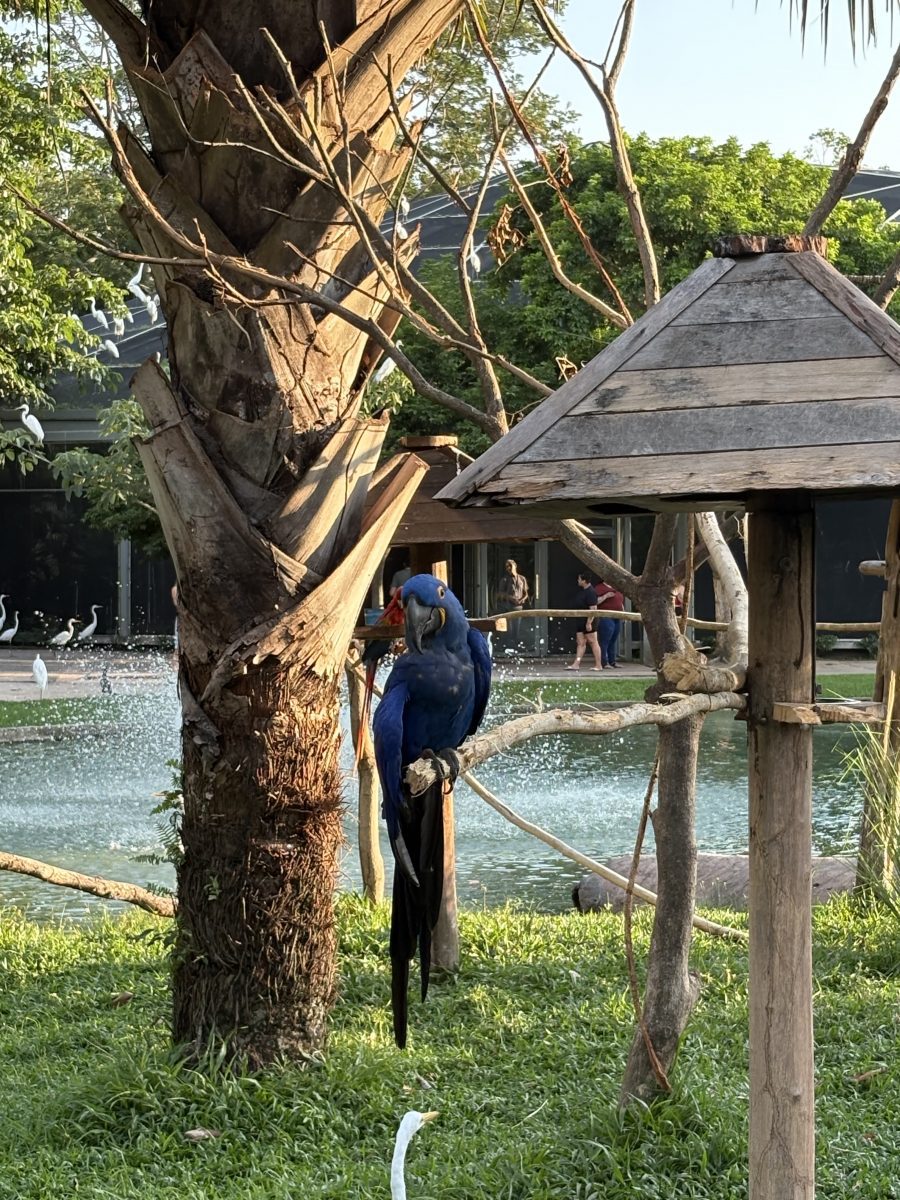
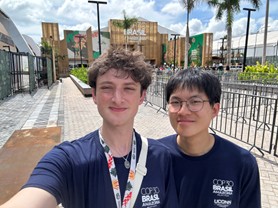 On Thursday, I was able to attend a talk that I had been looking forward to attending all week, put on by the International Bar Association that addressed how lawyers and law firms can advance climate mitigation and adaptation through pro bono work and beyond. While it is no secret that there are lawyers out there fighting for the environment, I find it extremely important that all lawyers, no matter what their practice, are conscious of the effects their work has on our natural world. I found this talk so interesting because it stressed the importance of that idea, and the speakers provided actionable steps to help achieve those goals. For instance, the speakers emphasized providing non-governmental organizations and civil society groups that protect vulnerable groups and mitigate climate change with free or reduced-cost legal services. I will surely take back what I learned from this talk and apply it to my future career as an attorney.
On Thursday, I was able to attend a talk that I had been looking forward to attending all week, put on by the International Bar Association that addressed how lawyers and law firms can advance climate mitigation and adaptation through pro bono work and beyond. While it is no secret that there are lawyers out there fighting for the environment, I find it extremely important that all lawyers, no matter what their practice, are conscious of the effects their work has on our natural world. I found this talk so interesting because it stressed the importance of that idea, and the speakers provided actionable steps to help achieve those goals. For instance, the speakers emphasized providing non-governmental organizations and civil society groups that protect vulnerable groups and mitigate climate change with free or reduced-cost legal services. I will surely take back what I learned from this talk and apply it to my future career as an attorney.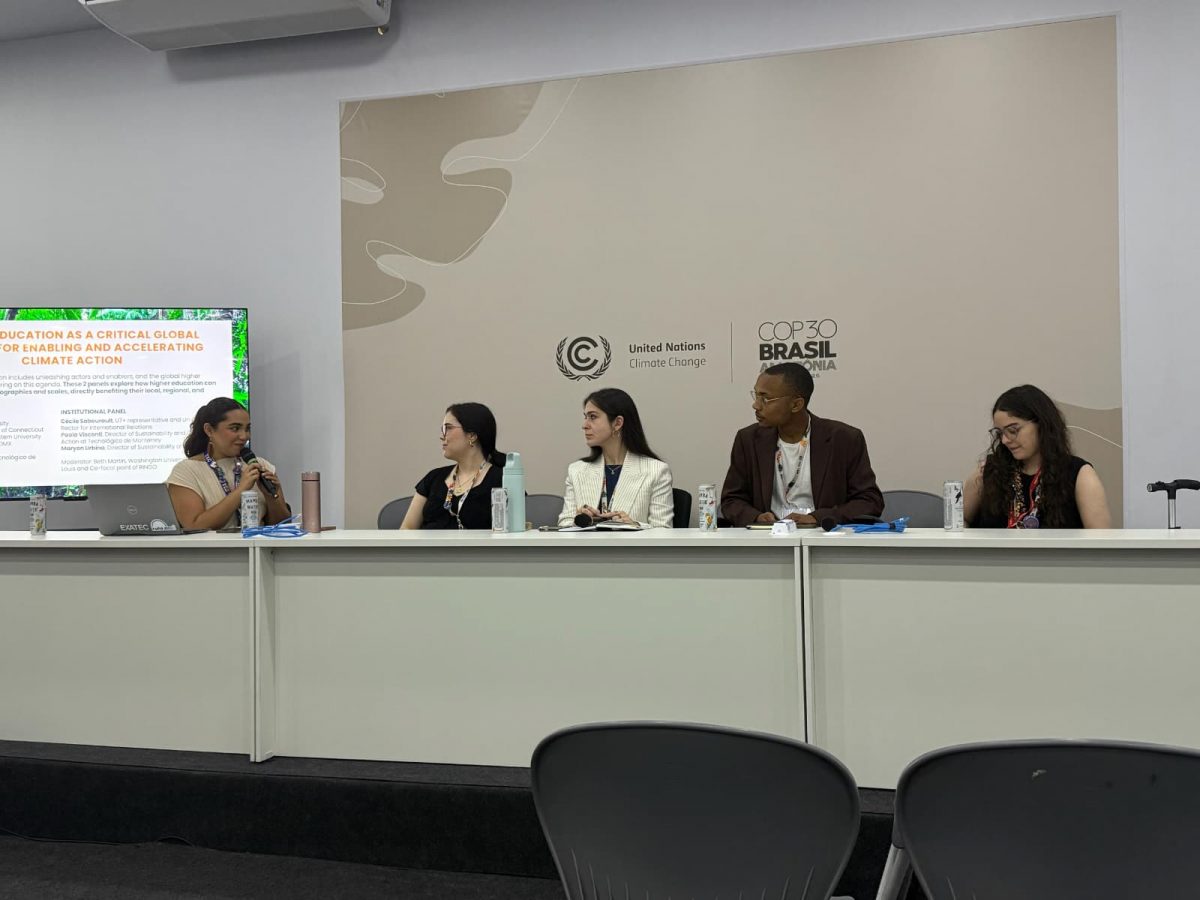 Afterwards, I had the honor to participate in the Higher Education as a Critical Global Partner for Enabling and Accelerating Climate Action panel alongside Valeria Soto (Tecnológico de Monterrey), Phoenix Boggs (Yale University), Javiera Cabezas Parra (Northwestern University), and Fernanda Muraira (Universidad Iberoamericana, Ciudad de México). We exchanged insights on unique ways youth have felt both empowered and faced barriers when getting involved in climate action. It was incredible to witness the administrators and delegates in the room break down their plans to combat those barriers.
Afterwards, I had the honor to participate in the Higher Education as a Critical Global Partner for Enabling and Accelerating Climate Action panel alongside Valeria Soto (Tecnológico de Monterrey), Phoenix Boggs (Yale University), Javiera Cabezas Parra (Northwestern University), and Fernanda Muraira (Universidad Iberoamericana, Ciudad de México). We exchanged insights on unique ways youth have felt both empowered and faced barriers when getting involved in climate action. It was incredible to witness the administrators and delegates in the room break down their plans to combat those barriers.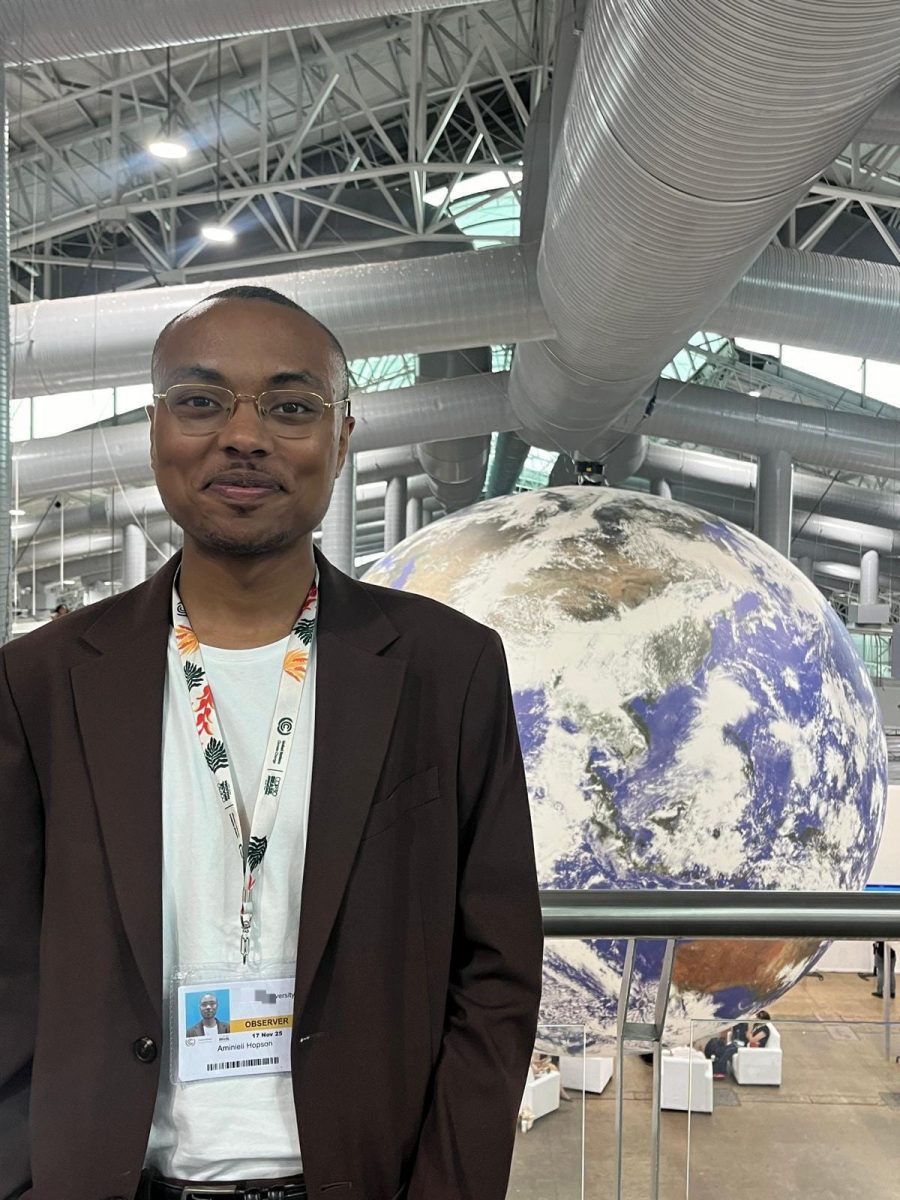
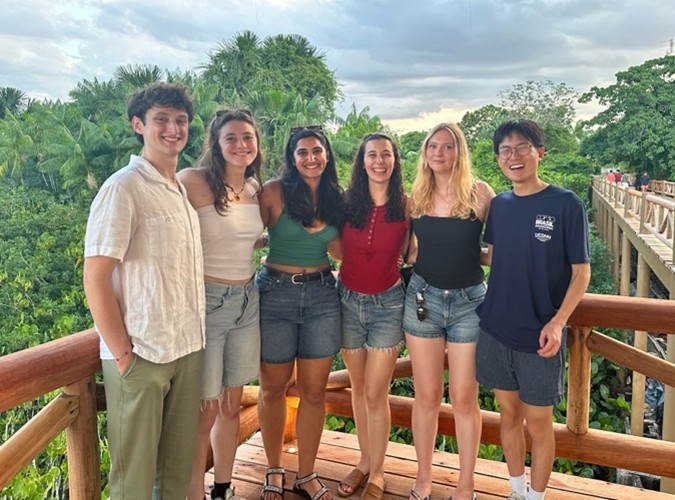 As I reflect on COP30, I keep coming back to one central idea: climate work is about people. When I say people, I do not mean it in the Bill Gates way. I mean people in the human sense. People with stories, cultures, memories, and lived experiences that shape how they move through the world. People whose lives are touched by climate change long before it ever becomes a headline or a negotiating point. People who carry knowledge that does not come from textbooks but from daily life, from land, from history, from relationships. These are the people whose experiences define climate reality, far beyond the technocratic lens that tries to manage suffering instead of transforming the systems that create it. One of the most meaningful parts of COP30 was realizing how my own lived experiences shape the way I see the world and the way I understand this crisis. The values I grew up with, the communities I have been part of, and the moments in my life when I felt both supported and unheard all influenced how I responded to what I saw in Belém. In many ways, COP30 made me more aware of how personal climate work is. It touches everything from where we come from to what we care about to how we show up for each other.
As I reflect on COP30, I keep coming back to one central idea: climate work is about people. When I say people, I do not mean it in the Bill Gates way. I mean people in the human sense. People with stories, cultures, memories, and lived experiences that shape how they move through the world. People whose lives are touched by climate change long before it ever becomes a headline or a negotiating point. People who carry knowledge that does not come from textbooks but from daily life, from land, from history, from relationships. These are the people whose experiences define climate reality, far beyond the technocratic lens that tries to manage suffering instead of transforming the systems that create it. One of the most meaningful parts of COP30 was realizing how my own lived experiences shape the way I see the world and the way I understand this crisis. The values I grew up with, the communities I have been part of, and the moments in my life when I felt both supported and unheard all influenced how I responded to what I saw in Belém. In many ways, COP30 made me more aware of how personal climate work is. It touches everything from where we come from to what we care about to how we show up for each other.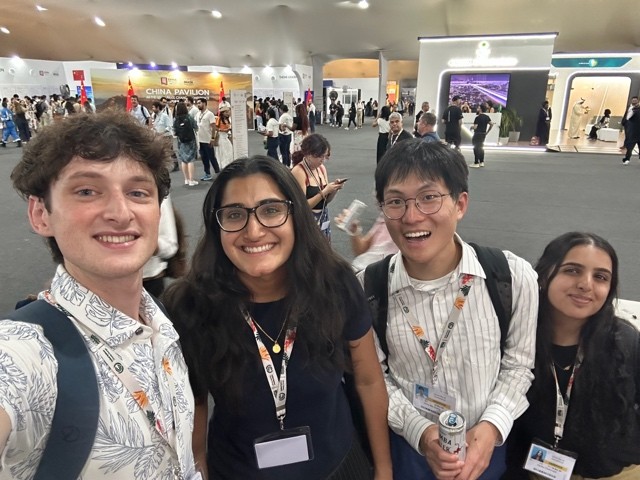
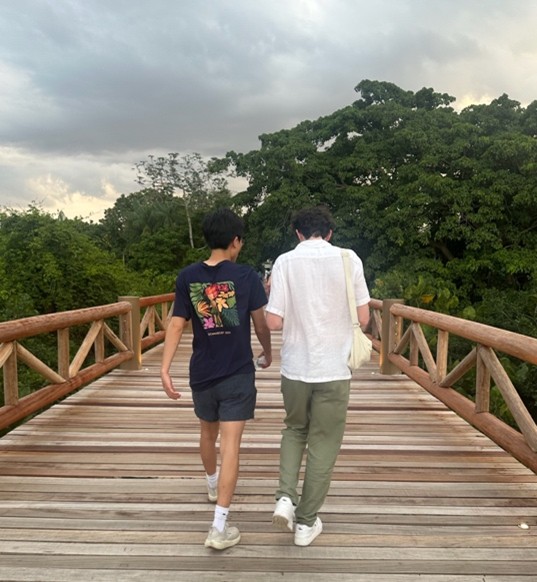 Our cohort played a huge role in shaping that understanding. We came from different places and were drawn to different aspects of climate work. Some of us focused on justice, others on technology, international systems, or environmental health. We had different academic backgrounds, cultural perspectives, and personal motivations. What made the experience powerful was the way we all brought our full selves to it and I learned how climate change intersects with identity in ways I had not fully appreciated before. COP30 also taught me that lived experience is not something separate from climate work. It is part of what shapes climate justice, resilience, and policy. People who live through storms, displacement, heat, or pollution carry knowledge that cannot be found in reports or negotiation texts. People whose lives intersect with social, economic, and cultural challenges understand the complexity of transition in ways that academic theory alone cannot capture. Any meaningful path forward has to center those voices and bridge the gap between policy and lived reality. Looking ahead, I want to build spaces where people feel heard and supported. I want to work in ways that respect different perspectives and value the power of community. I want to make room for lived experience in every climate conversation I am part of, whether big or small. COP30 reinforced that climate action is not only a global responsibility, but also a human one, shaped by the connections we make and the communities we build. That is the lesson I am taking with me, and the one I hope to honor moving forward.
Our cohort played a huge role in shaping that understanding. We came from different places and were drawn to different aspects of climate work. Some of us focused on justice, others on technology, international systems, or environmental health. We had different academic backgrounds, cultural perspectives, and personal motivations. What made the experience powerful was the way we all brought our full selves to it and I learned how climate change intersects with identity in ways I had not fully appreciated before. COP30 also taught me that lived experience is not something separate from climate work. It is part of what shapes climate justice, resilience, and policy. People who live through storms, displacement, heat, or pollution carry knowledge that cannot be found in reports or negotiation texts. People whose lives intersect with social, economic, and cultural challenges understand the complexity of transition in ways that academic theory alone cannot capture. Any meaningful path forward has to center those voices and bridge the gap between policy and lived reality. Looking ahead, I want to build spaces where people feel heard and supported. I want to work in ways that respect different perspectives and value the power of community. I want to make room for lived experience in every climate conversation I am part of, whether big or small. COP30 reinforced that climate action is not only a global responsibility, but also a human one, shaped by the connections we make and the communities we build. That is the lesson I am taking with me, and the one I hope to honor moving forward.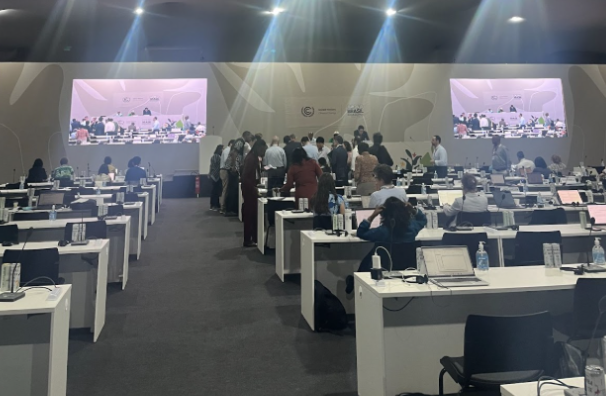 In the news, we often hear about the negotiations, which countries are willing or unwilling to compromise, and what transpired the previous day. What we rarely consider is the sheer number of individuals involved behind the scenes—from those engaging directly in diplomacy, to the people handling logistics, to the reporters and bloggers who communicate the events in Belém to the rest of the world. Two experiences in particular helped me humanize this entire process.
In the news, we often hear about the negotiations, which countries are willing or unwilling to compromise, and what transpired the previous day. What we rarely consider is the sheer number of individuals involved behind the scenes—from those engaging directly in diplomacy, to the people handling logistics, to the reporters and bloggers who communicate the events in Belém to the rest of the world. Two experiences in particular helped me humanize this entire process.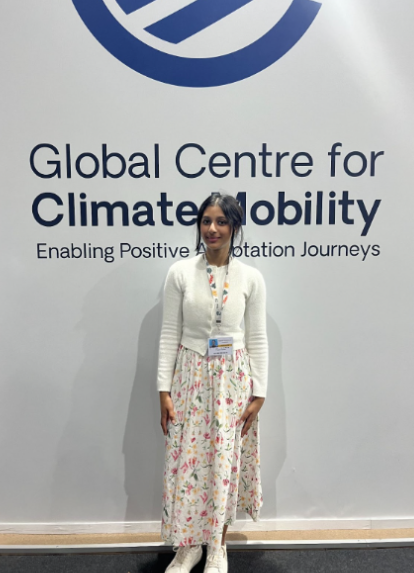
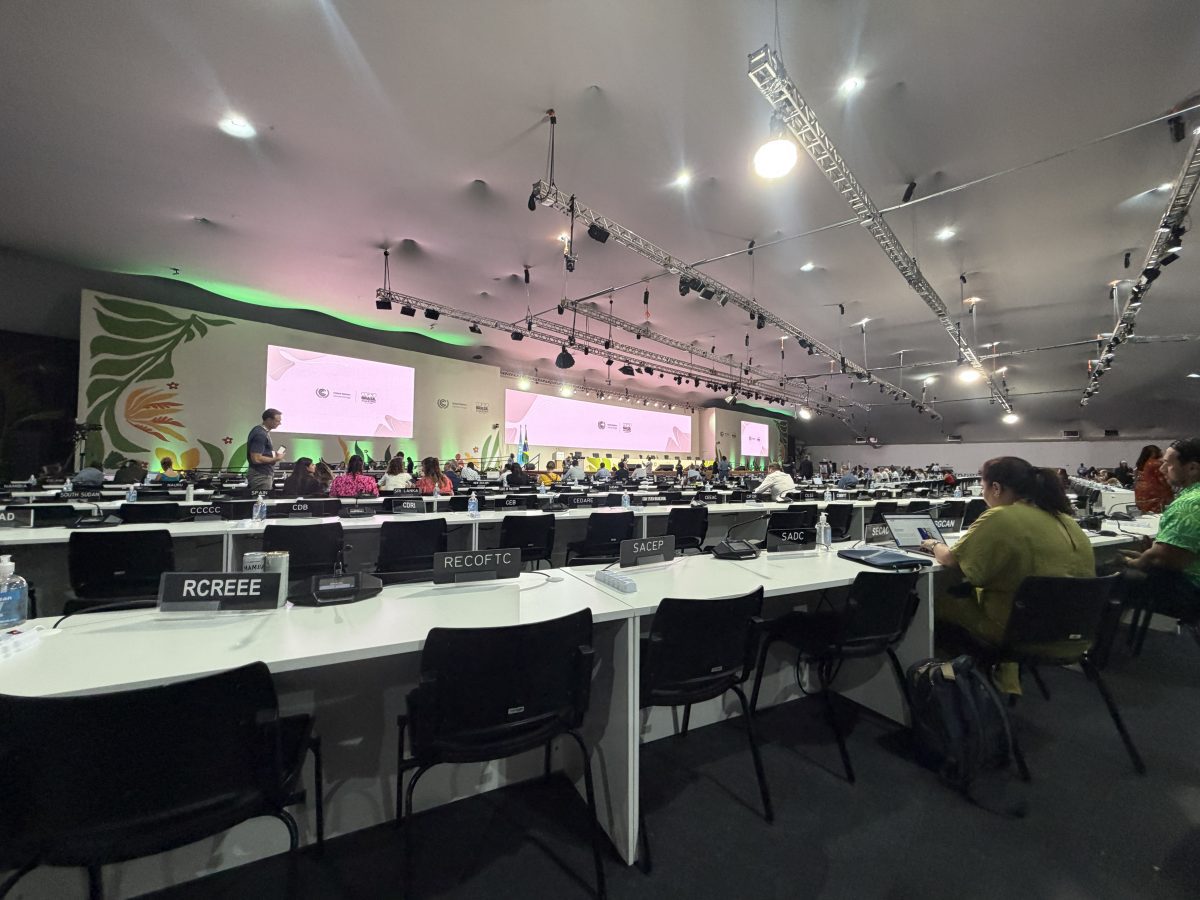
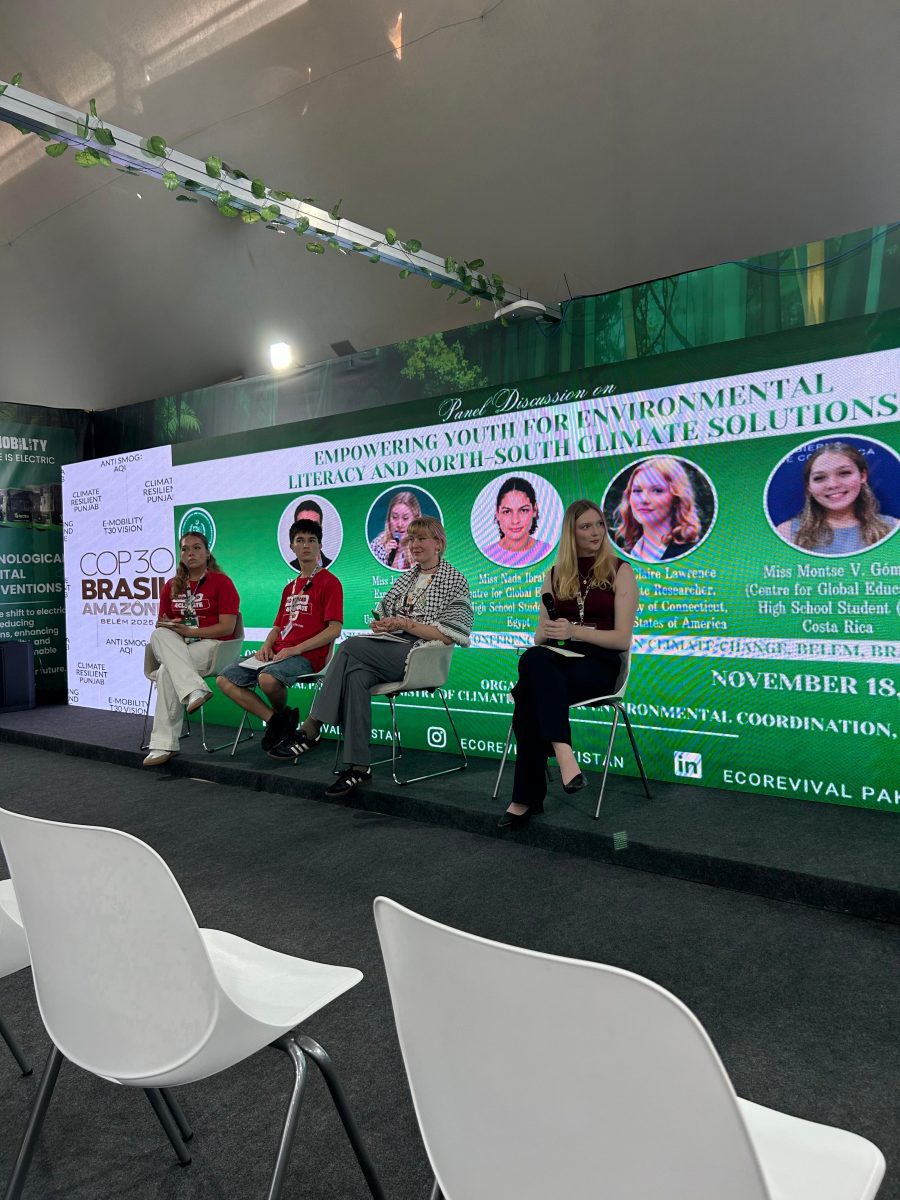 Pakistan contributes less than 1% to global greenhouse gas emissions. Tuvalu even less. Yet it is developing nations who suffer the most. Hearing the stories from across the globe, and even from indigenous people from our own country, was one of the most impactful experiences from the conference.
Pakistan contributes less than 1% to global greenhouse gas emissions. Tuvalu even less. Yet it is developing nations who suffer the most. Hearing the stories from across the globe, and even from indigenous people from our own country, was one of the most impactful experiences from the conference.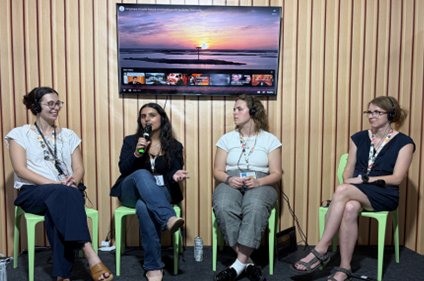
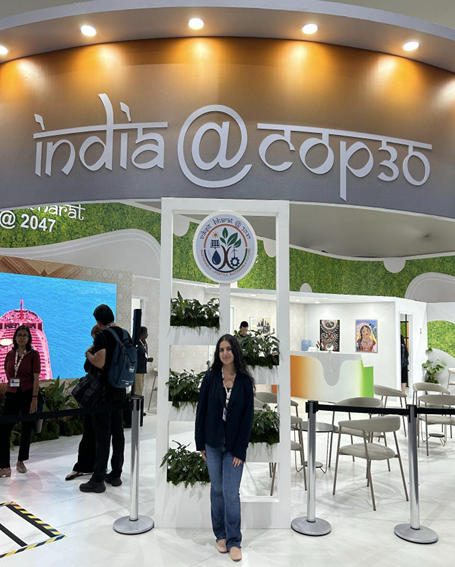
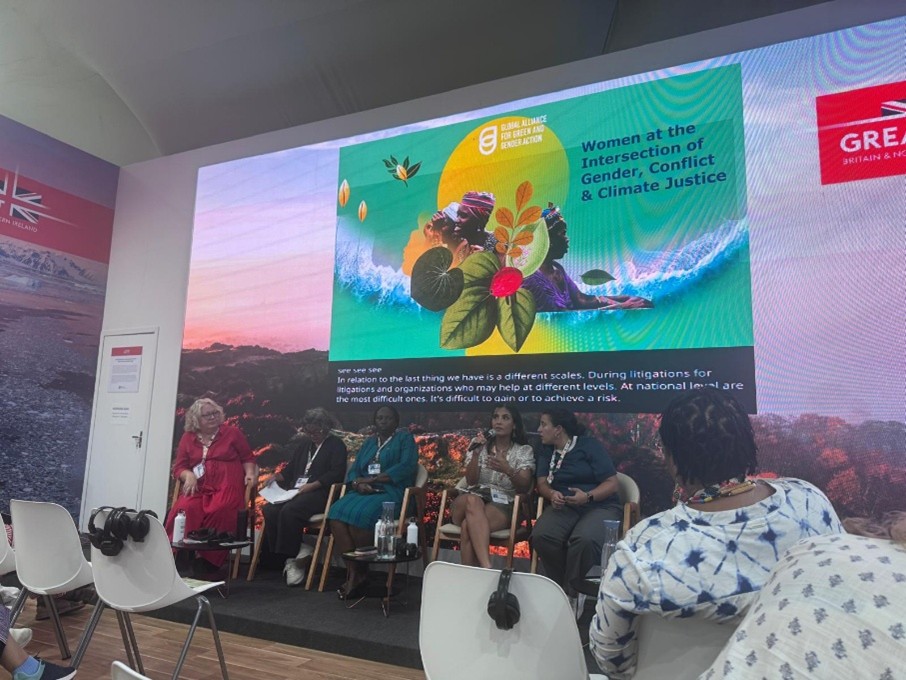
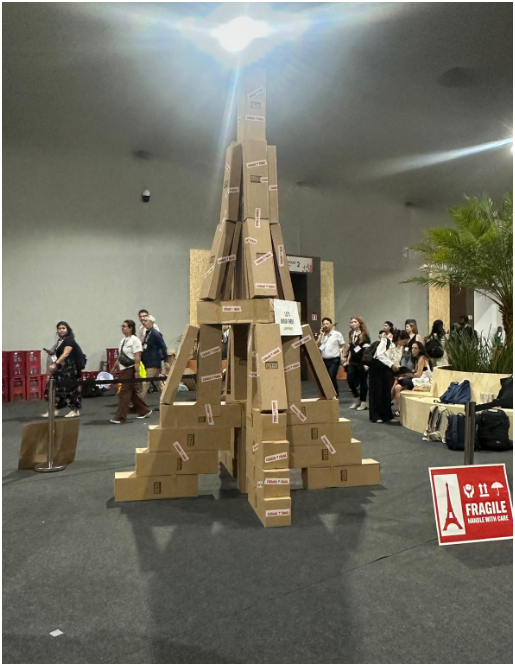 Overall, based on the key lessons I learned from COP 30, I am very excited to apply them to my personal and professional life. One of the ways I am going to apply these lessons is in the remainder of my education. As an engineering major, it can be very easy to get stuck in a technical mindset and not focus on other perspectives when implementing solutions. Based on what I learned from COP 30, I hope to change that by bringing a more holistic mindset to my professional career—looking at solutions not just from a technical standpoint, but also considering policy, community impact, and finances. Another way I am going to apply what I learned about critical language is in my future efforts to make a positive contribution to climate action. I will be more careful and intentional with the language I use and how I present my knowledge to others. Overall, COP 30 opened a variety of doors and perspectives for me that I look forward to applying in both my personal and professional life.
Overall, based on the key lessons I learned from COP 30, I am very excited to apply them to my personal and professional life. One of the ways I am going to apply these lessons is in the remainder of my education. As an engineering major, it can be very easy to get stuck in a technical mindset and not focus on other perspectives when implementing solutions. Based on what I learned from COP 30, I hope to change that by bringing a more holistic mindset to my professional career—looking at solutions not just from a technical standpoint, but also considering policy, community impact, and finances. Another way I am going to apply what I learned about critical language is in my future efforts to make a positive contribution to climate action. I will be more careful and intentional with the language I use and how I present my knowledge to others. Overall, COP 30 opened a variety of doors and perspectives for me that I look forward to applying in both my personal and professional life.